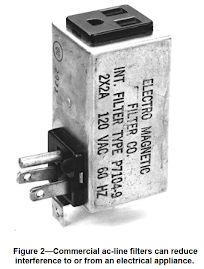How Ham Radio Works
by Brown, Gary. "How Ham Radio Works." 01 April 2000. HowStuffWorks.com.
Ham radio lets people talk across the globe, wirelessly and inexpensively. See more radio pictures.
A teen in Florida makes friends over the airwaves with a ham in Germany. An aircraft engineer in Washington participates in an annual contest and exchanges call signs with hams in 100 countries during a single weekend. In North Carolina, volunteers pass health and welfare messages in the aftermath of a hurricane.
This mix of fun, public service, friendship and convenience is the main feature of amateur radio. The true origin of the term "ham" seems to have been lost, but there are several theories. It may simply be a shortcut way of saying the first syllable of amateur radio, or it may have originally been used as an insult. Hams start out in amateur radio for many reasons, but they all have in common a basic knowledge of radio technology, regulations and operating principles.
Tune In |
Ham radio can be very portable and affordable. In this article, we will look at ham radio and show you how to get started in this wireless world!
Why would I get into ham radio?
Ham radio is for anyone who likes to communicate with others via wireless technology. It is also for anyone who enjoys experimentation. Licensed amateur radio operators communicate with each other in nearby places, across the country, around the world or even with astronauts in outer space!
Amateur radio is a worldwide group of people who communicate with each other over a wide frequency spectrum using many different types of wireless transmitting modes.
Often, younger hams get a chance to meet other hams of various ages and professions. For example, Kid's Day is an annual event that encourages young people to get on the air, perhaps with a family member or a neighbor who is a licensed amateur radio operator. The frequent networking often helps teens when they are making career or education choices and wish to get some advice (from professionals in many technical fields) that maybe mom, dad or the guidance counselor may not be able to give.
Today, there are more than 2.5 million around the world.
Frequencies and Transmitting Modes
Hams use a variety of frequencies for communications. Non-hams can "listen in" via their own receivers or radio scanners. Hams are able to use many frequency bands across the radio spectrum -- these frequencies are allocated by the FCC for amateur use. Hams may operate from just above the AM broadcast band to the microwave region, in the gigahertz range. Many ham bands are found in the frequency range that goes from above the AM radio band (1.6 MHz) to just above the citizens band (27 MHz). During daylight, 15 to 27 MHz is a good band for long-distance communications. At night, the band from 1.6 to 15 MHz is good for long-distance communications. These bands are often referred to historically as short-wave bands (as in "short-wave radio"). Unlike frequencies used by FM radio stations and TV stations, which are line-of-sight and therefore limited to 40 or 50 miles, short-waves "bounce" off the ionosphere from the transmitter to the receiver's antenna. The higher the frequency is, the "shorter" the wavelength is.
Some ham radio operators use the very reliable Morse code, while others use voice. Morse code signals (beeps) often get through when voice transmissions cannot. There are also very many digital modes as well, and hams use radio modems to communicate in various networks.









1 comment:
Using RentalCars you can get affordable car rental at over 49000 locations worldwide.
Post a Comment